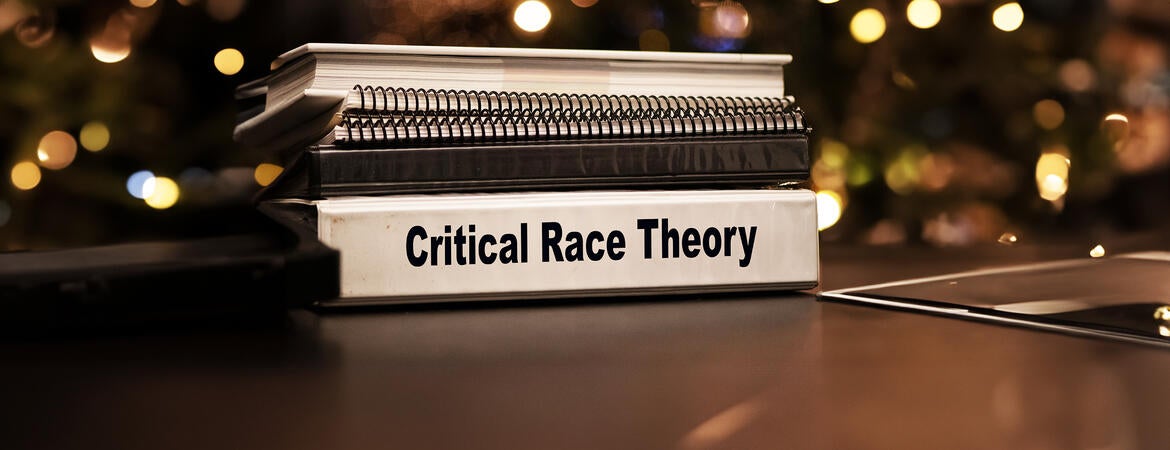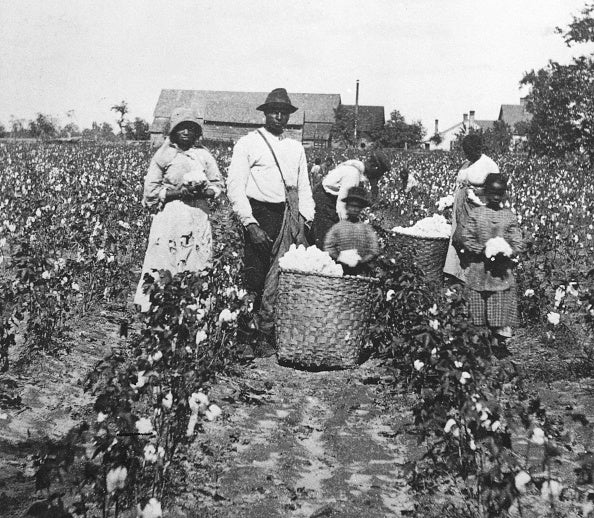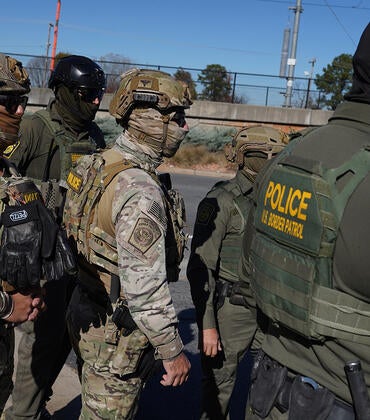
A California appeals court has temporarily blocked the Temecula Valley Unified School District’s controversial ban on critical race theory (CRT), ruling the policy is unconstitutionally vague and could silence educators. The decision halts enforcement of the district’s Resolution 21 policy, which was approved in late 2022, pending the outcome of a lawsuit that seeks to nullify the ban.
Two UC Riverside scholars—associate professors Uma M. Jayakumar and professor Rita Kohli—served as expert witnesses for the plaintiffs, drawing from their extensive research on race, education, and equity.
CRT is an academic framework that explores how systemic racism shapes legal and social structures in the United States, and it has become a flashpoint in school policy debates. Supporters argue it helps students understand historical and contemporary inequalities; opponents claim it promotes division and assigns blame based on race.
The legal fight in Temecula, Calif., gained statewide and national attention for its implications on curriculum.
In this Q&A, we ask Jayakumar and Kohli, both from UCR’s School of Education, to help us understand what’s at stake, how the court’s decision could shape education statewide, and why they believe clear, evidence-based policy matters in public schools.
Question: You both served as expert witnesses in the lawsuit challenging the Temecula Valley school board’s resolution. What key points did you present to the court?
Uma Jayakumar: In my declaration, I focused on how Resolution 21 fosters a race-evasive educational environment that censors discussion of systemic racism and racial violence. This harms students of color and undermines critical developmental outcomes for all students. I also drew from joint research that Rita Kohli and I co-authored, including our national study of K–12 educators and teacher educators who described chilling effects, surveillance, and burnout stemming from CRT bans. These bans create fear-based climates where inclusive and honest teaching is punished, and that is deeply damaging to educational quality and racial equity.
Rita Kohli: California Teacher Peformance Expectations (TPEs) and the related California Teaching Standards make teacher credentialing dependent on an educators’ capacity to create culturally and linguistically responsive classrooms that are free of racism and sexism. My declaration, co-authored with Dr. Marcos Pizarro (Dean of the College of Education at CSULA), emphasized how the resolution, which prevents teachers from engaging issues of race and racism or LGBTQ+ experiences and rights, violates these very TPEs that educators are legally and professionally obligated to uphold. This contradiction that we pointed to in our testimony was something the judge cited in their decision.
Our declaration also drew on our broader body of research on teachers of color, showing how policies like Resolution 21 intensify racial stress and professional vulnerability, pushing educators of color out and further isolating those who remain. Considering the overrepresentation of white teachers across California, we pointed to how this not only harms teachers of color but deprives students of educators who reflect and affirm their communities.
Q: The court described the district’s resolution as “unconstitutionally vague.” From your perspective, why is clarity in such policies essential for educators and students?
Kohli: Decades of educational research has demonstrated why we need culturally responsive teaching in classrooms to serve California’s 80% public school student of color population. California policy on teacher credentialing is also very explicit and clear in its demands on teacher preparation, and the expectations it has for teachers across the state to understand how to identify and address issues of racism, sexism, and other forms of discrimination as they arise in classrooms. This resolution, however, is broad and general in the ways it limits teachers from engaging topics of race and racism. Vague policies like this create environments of fear and self-censorship. When teachers don’t know what is considered a violation, they often avoid teaching about race, identity, or inequality altogether. That strips students of access to critical knowledge and discussion.
Jayakumar: Ambiguity doesn’t just confuse educators, it suppresses their professional judgment. A vague rule like Resolution 21 becomes a tool of intimidation. It invites overreach and emboldens surveillance, especially of those educators already vulnerable in the system. That weakens trust and guts the possibility of equitable, honest education.
Q: How does this injunction protect educators and students in the short term, and what precedent might it set for other California school districts?
Jayakumar: The appellate court’s injunction offers a critical pause on a harmful and vague policy that was already chilling classroom instruction and punishing professional judgment. It protects educators who were under threat for simply doing their jobs in alignment with California’s standards. More broadly, this ruling affirms that ideologically driven censorship has constitutional limits. It sends a clear message that public school districts must align their policies with legal precedent, professional ethics, and educational integrity—not with political pressure or misinformation campaigns.
Kohli: This injunction allows teachers and students, many of whom called for legal support on this matter, some relief. Teachers may resume teaching in ways that they know are in the best interest of their diverse student population. Queer students and students of color can again feel like their experiences matter in schools. This injunction also sends a message to other school districts that they can stand up against policies, school boards, and the current political climate that is incredibly harmful to minoritized students and families.
Q: There is a lot of public confusion about what CRT actually is. How would you explain it in simple terms to a parent or community member?
Kohli: Critical Race Theory, or CRT, is a legal and academic framework developed to examine how racism operates within systems and institutions. It helps us understand why racial inequalities persist even after civil rights laws were passed. It is not typically a part of K-12 curriculum, but it has been used by legal scholars. litigators, and researchers to shine light on ways that race and racism have impacts on educational systems.
Jayakumar: And as Kimberlé Crenshaw, one of CRT’s founders, has pointed out, CRT has been turned into a boogeyman. Politicians have weaponized the term to stoke fear and push back against equity efforts. This strategy gained traction around 2020 as public calls for racial justice grew. The distortion is deliberate. It frames any conversation about race or inequality as extremist, when in fact it’s just accurate education. It’s part of a larger race-neutral legal fantasy that pretends fairness exists while sustaining systemic advantage, particularly for white Americans. Like the logic of “separate but equal,” it hides deep inequities behind a mask of neutrality.
Q: Opponents argue CRT promotes division or blames individuals based on race. What does your research say about how CRT-informed approaches impact students’ learning and school climate?
Kohli: Avoiding conversations about racism doesn’t create unity, it creates denial to preserve comfort. Our research shows that truthful education about race and racism does not divide students; instead, it equips them with critical thinking skills and understanding of why racial inequity exists, and supports them to not internalize deficit beliefs about minoritized communities. When students see their histories reflected and engage in honest dialogue, it improves their engagement, learning, and ability to navigate the world.
Jayakumar: Students are capable of grappling with complexity. Honest education about racialized realities fosters a deeper sense of community, not division. And the fear-based narrative around CRT is a distraction from the real goal, which is to prepare students for a multiracial society.
Q: How do bans on CRT or related topics impact the ability of teachers to provide a full and honest education?
Jayakumar: These bans lead to distorted and incomplete curriculum. Teachers feel pressured to omit major aspects of U.S. history and avoid conversations that are essential to student understanding. In our national study of 117 educators across the K–12 and teacher education landscape, published in Silenced and Pushed Out, we found that over 90% of participants reported fear, self-censorship, or increased emotional stress due to anti-CRT discourse and policy. One educator shared that they felt they were “teaching under surveillance.” Another described the constant calculation: “I worry that any word out of my mouth could be turned into an accusation.” These chilling effects not only harm teachers, they erode the quality and honesty of education for students.
Kohli: These bans aren’t just limiting content, they are reshaping the profession. Teachers in places with CRT-bans have gotten fired or reprimanded for discussing race, privilege, or identity—for directing students to books that affirm their identity. The damage is systemic. These policies are deterring educators from entering or staying in the field. That affects students for generations to come.
Q: What patterns are you seeing statewide or nationally regarding educational policies tied to race, identity, and inclusion?
Jayakumar: We’re seeing coordinated efforts to roll back decades of progress. Whether it’s curriculum restrictions, book bans, or the defunding of diversity initiatives, the common thread is fear. Fear of honest history and of empowered students. These efforts are deeply political and strategically racialized.
Kohli: History shows us that every wave of racial justice is met with reactionary efforts to reassert control. What we are witnessing now is not new. But the stakes are high. These are not abstract debates, they are daily realities for students and teachers on the ground.
Q: How are these kinds of curriculum bans affecting the recruitment and retention of teachers, particularly those of color?
Kohli: These policies are pushing out the very educators we need most. Teachers of color already face systemic barriers, and when issues of race and racism, subjects many educators of color are recruited for having insight around, are politicized or banned, it sends the message that their presence and expertise are not valued. It makes the profession less sustainable, emotionally and professionally. What we’re seeing is increased burnout, silencing, and departure. This isn’t just about teacher attrition—it’s about narrowing the scope of education itself and diminishing the opportunity for all students to learn in diverse and affirming environments.
Q: What would an inclusive and legally sound policy around teaching race and history look like?
Jayakumar: An inclusive and legally sound policy would be one that affirms California’s professional teaching standards, particularly the mandate that teachers engage students in examining how social, cultural, and historical contexts shape identity and inequality. As I emphasized in my declaration, such policies must reject race-evasiveness and instead ensure that educators are supported—not punished—for building racial literacy. This includes the ability to discuss structural racism, historical injustice, and contemporary disparities through evidence-based pedagogy. Drawing on both my research and the findings from our co-authored work, I would add that such a policy must also explicitly protect teachers from vague or ideologically driven censorship. It should promote institutional clarity, academic freedom, and curricular coherence so that all students, regardless of background, are prepared to live and lead in a racially just society.
Kohli: Policies like Resolution 21 are legally and pedagogically unsound precisely because they violate what we know from decades of research on effective teaching and teacher development. As I argued in my declaration and in the article Toward a Healthy Racial Climate in Teacher Education, which I co-authored with colleagues including Uma, many teacher educators—especially faculty of color—report that race-conscious, equity-centered teaching is often met with resistance, marginalization, or institutional silence. One participant described being “isolated and targeted” for doing the very work they were hired to do. A sound policy would do the opposite: it would institutionalize support for inclusive and legally mandated teaching practices and protect educators from political intimidation that undermines the profession.
Q: Finally, how can community members—parents, students, educators—best support truthful and inclusive education in their districts?
Kohli: It is important to be able to understand the truths of U.S. racism. Be educated, educate your children. Organize. Use your collective voice, and resist.
Jayakumar: Building coalitions is so important, which is how Temecula community members fought back and changed local policy to protect our children’s right to historical truths and quality education. They are an inspirational example of how our voices matter now more than ever. Take initiative to be informed and act collectively.





